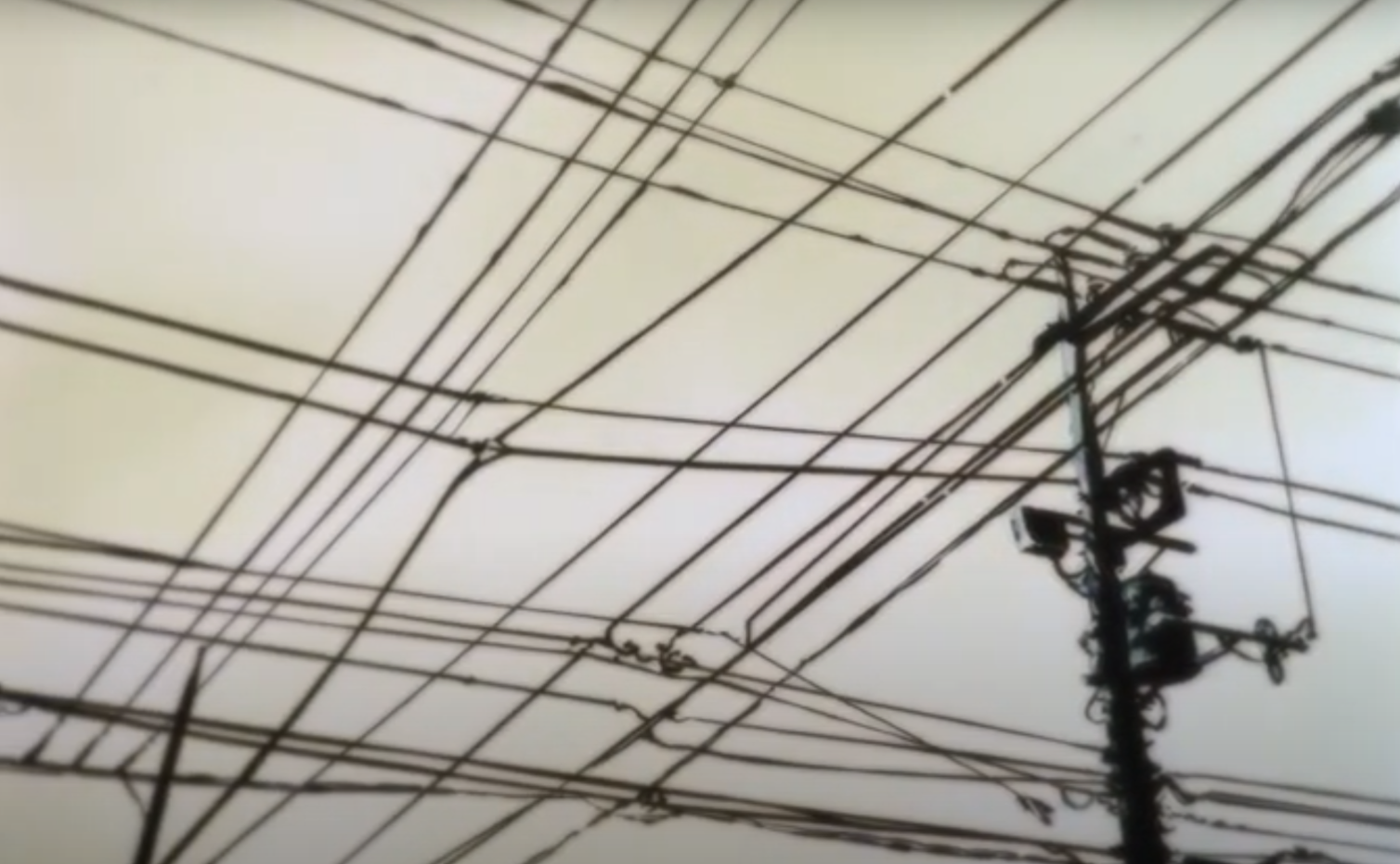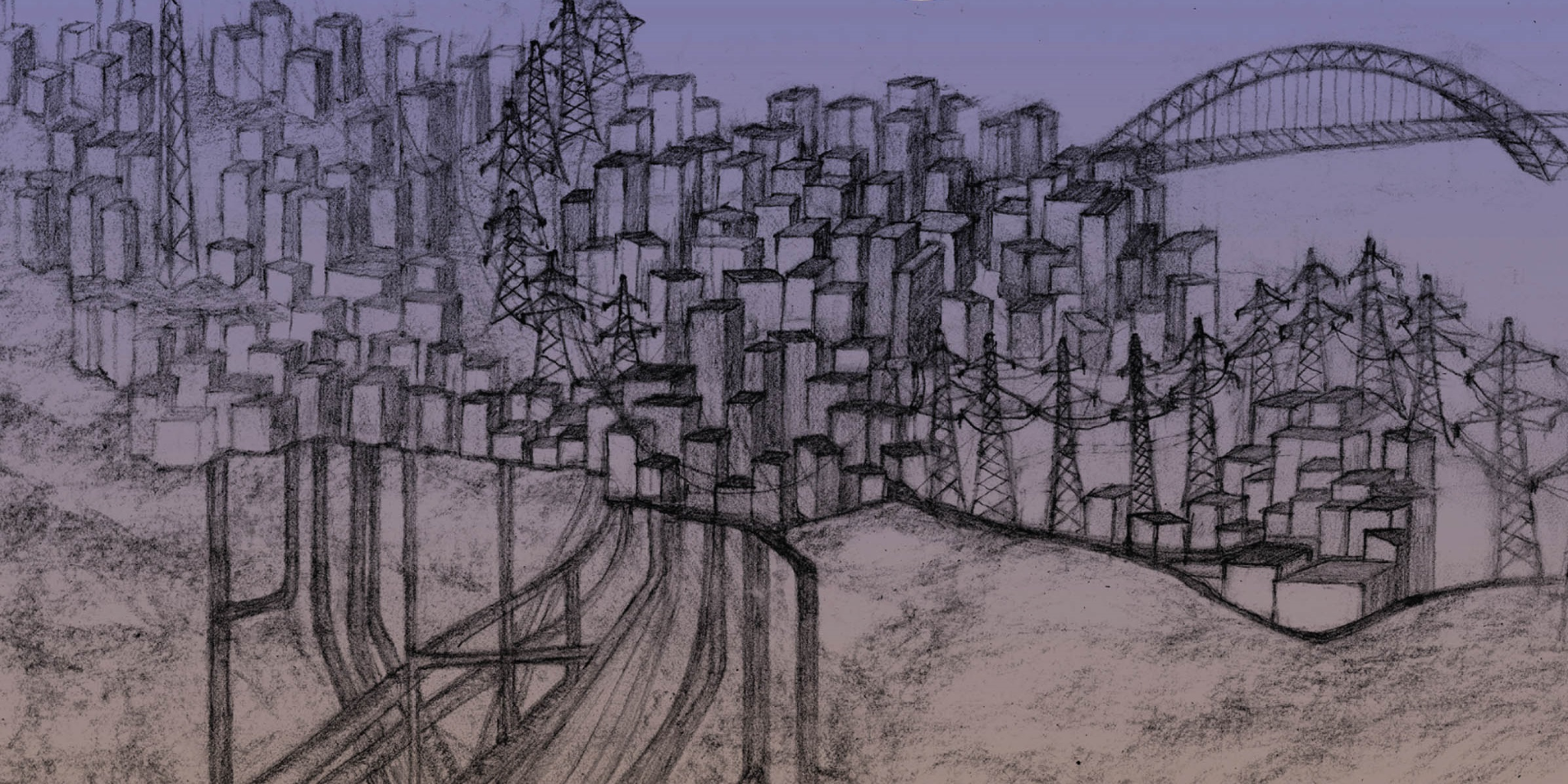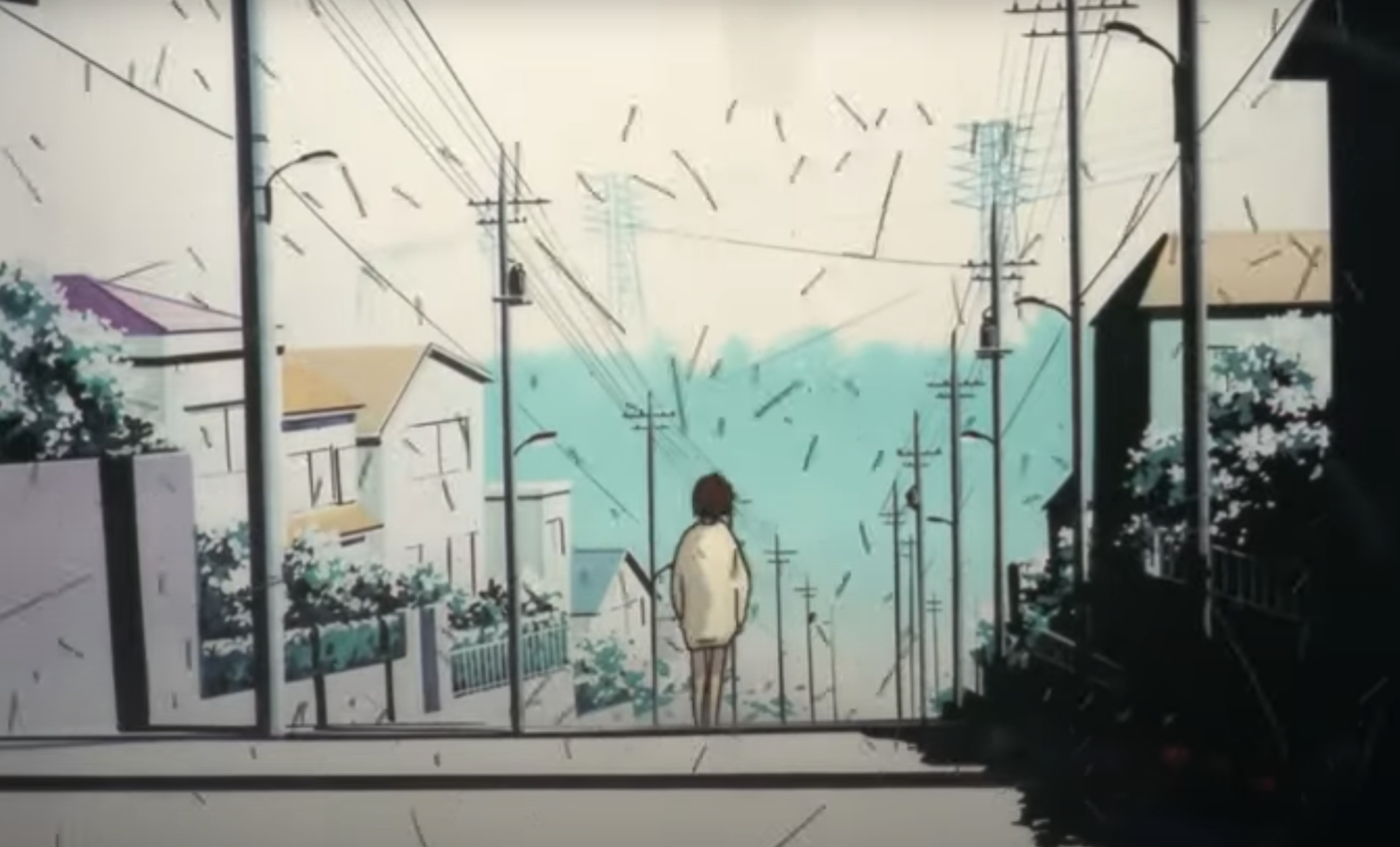We live in the Wired now

Serial Experiments Lain, first broadcast in 1998, depicts a world in which the boundaries between physical reality and the virtual have begun to blur. The show drifts through a desolate and hazy suburban Japan in which the ‘white heat’ of technology appears to have overwhelmed even the sun: Lain’s most impactful imagery is that of bleached and empty streets presided over by an impossibly bright sky, an ivory aether broken only by criss-crossing masses of telephone lines. As the series progresses, these wires only invade and encroach further, choking the domestic spaces seen and ensnaring the characters within. At moments, the very air thrums with the drone of electricity and the shadows fill with deep red clots, as if the energy and information surging through these vessels threatens to erupt forth.
Lain resonates deeply at an emotional level, despite its eccentricities, because it is based in a core experience: the feeling of being entangled in an impossibly dense and global network of flows. This warrants emphasis: How far away from your body right now is the closest water pipe? Where did that water come from? Where is the closest road? What volume of things and people have travelled along it in the past day? Where did those things and people come from, and where are they heading? Where did the fuel powering those vehicles come from, and what effect will those emissions have? Who produced the meal you last ate? Were they paid a fair amount for their labour? What about your nearest computer? How much information have you viewed on the internet in the last few hours? Have you communicated with someone far away? How was that data transferred to you?
One of the results of the time and space collapsing processes of globalisation is that we are all tangled in a web of flows, visible and invisible. Katarina Nitsch’s scratchy pencil illustrations of urban junctions and transport terminals in Ash Amin & Nigel Thrift’s Seeing Like a City (2016) similarly suggest this interpretation, prompting us to consider the spider behind this sticky web: infrastructure. James Lovelock’s Gaia (1972) and the Earth as an infinitely complex self-sustaining natural system has been supplanted by an equally complex but much fiercer ‘second nature’ (recalling Richard Judd) of infrastructure, which has reshaped the planet physically through processes of ecological/climate change, and experientially by binding it into a tighter and tighter ball. This article seeks to stress this conceptual understanding of the Earth under infrastructure as an all-encompassing rhizomatic web: a seamless and non-hierarchical network in which all matter and information is connected and constantly moving. Not even in Amin & Thrift’s “remote Northumbrian bog” can one escape infrastructure, with subtle climatological and meteorological shifts everpresent, chemicals and plastics seeping through the landscape, and man-made satellites twirling overhead. Being actively conscious of how connected you are can induce an acute claustrophobia.

Amin & Thrift note that while the experience of physical infrastructure is “most pressing” in cities, which act as knots in the global infrastructural web, these flows of tangible material have been supplanted by a third nature of ethereal information flows, the transport of culture and data around the world at impossible speeds. These flows “both assist and undergird our ways of speaking, hearing, seeing, writing, feeling and thinking”: traditional media “creates a predictable set of bubbles of time and space”, while telecommunications and social media “provides an infrastructure of constant sociability”. While a concrete example would be the very visible impact the internet and social media has had on politics over the past decade, it is also worth considering how the recurrences of Twitter, Facebook, Youtube, and TikTok are becoming “etched on our bodies and brains as expected nonrepresentational behaviours”: Clay Mills has speculated during the pandemic how the body language and conversational style of video-calling and online media (such as news clips, social media stories, and vlogging channels - what he denotes ‘content-core’) might have had an indelible impact on our communication, especially for the yet-to-be-socialised young.
Quoting Mark Hansen, Amin & Thrift conclude that “human experience is currently undergoing a fundamental transformation caused by the complex entanglement of humans within networks of media technologies that operate, predominantly, if not almost entirely, outside the scope of human modes of awareness”. Indeed, through the churning algorithms of contemporary social media, we perhaps have become cyborg-addicts. TikTok highlights best how addiction can be precision-engineered, with an oppressively opaque algorithm capable of detecting even subconscious interests, instantly adapting to maximise engagement. Mark Fisher frequently discussed social media and smartphone addiction, citing the shared phenomenon of constantly checking for notifications but always returning unsatisfied, as no amount of updates or interactions will ever be enough. Along the same line, he related a personal anecdote of how even during a romantic dinner, he held his Blackberry mobile in hand under a table, compulsively tapping buttons merely to satisfy his fingers. Similarly, I’m confident many can sympathise with the unease and distress experienced when handing their smartphone to another person. While the technology of the smartphone and the social media algorithm has not been literally inserted into the human form, information infrastructure has still integrated itself into our bodies and even hijacked our psychological drives and brain chemistry: a peripheral parasitic organ.

Post-script:
Well, this is funny isn’t it? The day that I decide to finish this article Facebook goes down (for a few hours at the minimum). Matthew Gault in a Twitter thread has explained how this event highlights the impact Facebook has had on the internet. Mark Zuckerberg has made it very clear in media/business releases that his company aims to become the whole internet.
The rhizomatic structure of the internet means it is innately revolutionary: any user can share information with whoever they desire without having to act through an intermediary, allowing the possibility to connect struggles and create new spheres. Blocking the transfer between two devices does not matter when every device has countless connections through which alternate pathways can be forged. What has happened today can best be described through the example of mycorrhizal networks: vast underground fungal webs through which trees have become capable of communicating with each other about threats and conditions. This fungal web (the infrastructure) has become parasitised by capitalistic and authoritarian actors such as Facebook. A corruption has seeped through each connection, unbeknownst to the symbiotic pair of the fungus and the trees, until certain regions of the fungal networks are suddenly and completely severed, leaving those trees within cut off from the whole.
Returning to the current situation, there are likely millions of people who are completely isolated right now, because the only connection they have to others they need to communicate with is through Facebook. Others could be stranded, as ride-sharing apps or online taxi/courier services (Uber, Lyft, Deliveroo) suddenly halt. Even more seriously, the omnipresence of the Internet of Things (many household appliances, bus stops, and door locking mechanisms all now rely on internet connections) means that even our ability to access shelter and facilities may be limited.
The last few hours have provided a terrifying preview of the consequences of Facebook’s endgame. This article has been very difficult to write because of the increasing rate at which this entire situation is unfolding: most days there is a new story about Facebook’s Metaverse ambitions, Amazon’s Internet of Things, leaked documents on algorithmic ‘Predictive Transactions’, or state-initiated country-wide internet lockdowns. Hopefully I’ll be able to get a follow up out at some point on these and more. Here’s to infrastructure!